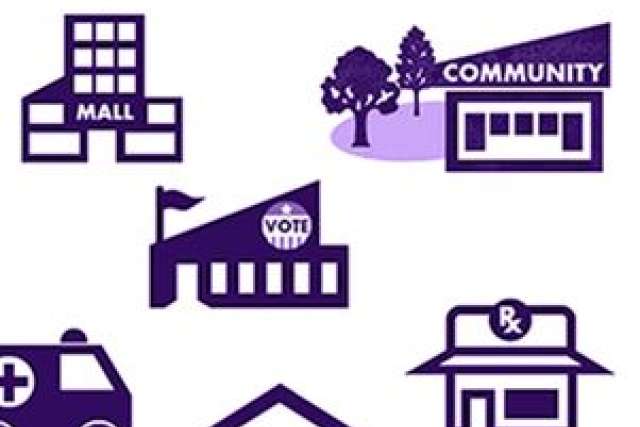A church. A city park. An office. These are not the typical settings for a medical checkup. But a new nationwide study by the UCLA Center for Health Policy Research shows that providing health services in unorthodox settings helps underserved adults get preventive care.
With support from the Centers for Disease Control and Prevention, the study’s authors reviewed 142 outreach programs nationwide and identified 20 that successfully used non-traditional settings, such as churches and parks, to promote or deliver preventive services (such as bone density and cancer screenings) to older underserved populations.
“The research shows that health providers might need to think outside the box on how and where to deliver health services,” said Janet Frank, lead author of the study and an adjunct associate professor at the UCLA Fielding School of Public Health. “The programs that fared the best did not wait for patients to come to them — they went to where the patients were.”
Being in a culturally familiar place increases a person’s comfort level and encourages him or her to ask questions, Frank noted.
“For many older adults, it’s more inviting to have coffee and chat with a small group about health issues than go to a hospital or doctor’s office,” Frank said. “Once they’re engaged in discussion, they’re more likely to get the blood pressure reading or flu shot.”
The authors note that adults age 50 and older from various racial and ethnic groups have rates far below the targeted national goals for many preventive services. African Americans had the lowest rate of flu vaccinations at 52 percent, which is well under the target of 90 percent. Asian women had the lowest participation rate for mammograms, 64 percent, compared to a target of 81 percent.
To reach these at-risk groups, providers offered services in community settings, including:
Churches: Following services, a faith-based program gave onsite flu and pneumococcal vaccinations at churches with low-income African American and Latino congregations in the San Francisco Bay area.
Neighborhood homes: Vietnamese health workers in San Francisco met with small groups of Vietnamese women in neighborhood homes to discuss breast and cervical cancer screening information.
Offices: Peer health advisors met with female employees at 26 workplaces in Massachusetts to discuss breast and cervical cancer screening.
Parks: Pharmacists and pharmacy students in Arkansas educated and screened people for blood pressure, cholesterol and measured body mass index at community health fairs held in city parks.
YWCA sites: Programs at 78 locations in 30 states had workers who did outreach and education and referred people to providers for breast and cervical cancer screenings.
To strengthen delivery and expansion of preventive health services to diverse, underserved, older adults, the authors have four policy recommendations: ensure funding to establish and integrate a program into a host organization for continuity; create written materials that could be “culturally tailored” to fit more than one group; offer financial incentives to community-based programs and clinical providers to encourage them to partner together; and have health service providers bring services to where people live, work and gather.
“Having preventive care services available where people go about their daily lives opens a door to better health for the whole community,” said Lynda Anderson, director of the CDC’s Healthy Aging Program, which funded the research.
Venetia Lai



